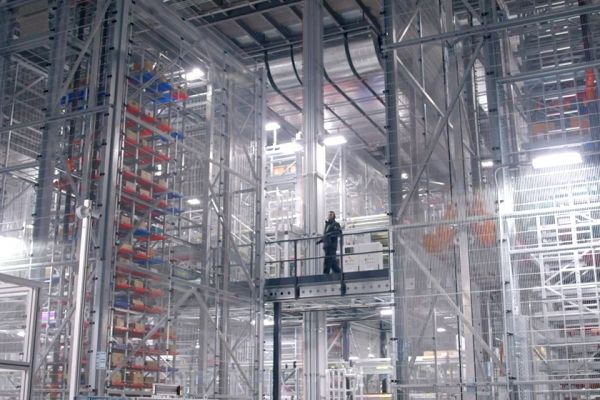It's very easy for businesses to be dazzled by the latest technologies, but with proper planning, a retailer’s digital goals can be achieved. ESM catches up with Michael Renz, Global Retail Tech Leader at EY. This article first appeared in ESM's March/April 2024 edition.
Retailers are compelled to embrace technology – particularly the potential of AI – or risk falling behind in the market. That’s according to Michael Renz, global retail tech leader at EY, who notes that while there has been a surge in technology adoption in retail in the past couple of years, business owners should ensure that they plan accordingly before they take the digital plunge.
“Retailers have not been at the forefront or been one of the early movers when it comes to tech transformation,” Renz tells ESM, “but all of a sudden, they are all moving at once. Why?
“AI might be a catalyst. Many will have been told, ‘If you’re not investing in AI now, you’re going to be irrelevant for the consumer of tomorrow.’ There’s an element of truth in that, but, honestly, if you don’t have the prerequisite to move into an AI world, you will get nothing out of it.”
Planning The Journey
As well as addressing the fear and distrust that many employees might have about AI adoption – “Never underestimate the impact a tech transformation can have on people,” says Renz – retailers should consider their long-term objectives when it comes to all types of technology, rather than succumb to immediate pressures.
“In many cases, our clients are being driven by software vendors,” he says. “A software vendor might say, ‘You need to update your system now, or we will charge you an extra fee,’ and while that’s true, as a justification or purpose for starting a transformation, that’s not a good one.
“Often, a business will forget about its ultimate objective – what target it wants to achieve in three years from now, or five years from now. Our recommendation is to always look into the future first, and then apply what we call a ‘future-back methodology’. Start with the target that you want to achieve in the future and look at building the proper set-up for such a transformation – and don’t forget to put humans at the centre.”
As it is still an emerging trend, the rise of artificial intelligence has led to a phenomenon known as ‘AI-washing’ – in other words, the misleading use of AI-related terminology – which can similarly muddy the waters for businesses looking to establish a way forward.
“I was at an event earlier this year, and it seemed like every speech or presentation had AI in the title,” says Renz, “but after five minutes, in some cases, I realised there was no AI in it at all. Retailers need to be careful. They need to plan a thorough road map on what the journey should look like and really consider what is beneficial for your business, and what isn’t.”
As well as engaging your in-house personnel, it’s also important that retailers also bring customers on their digital journey. Consumer distrust in AI, for example – fuelled by concerns over deepfakes and identity theft – means that retailers need to educate customers and establish proper governance, to build trust.
“From a risk management perspective, creating trust in technology will play a key role in the near future,” says Renz.
Decision Making
Any tech transformation is likely to be a gruelling process, leading, in many cases, to increased complexity and rising costs.
“Over the past couple of years, we have been brought in by many C-level executives with the same story – they started on a tech transformation a few years previously, and they have got stuck somewhere in the middle,” says Renz.
“They’re not achieving the benefits they aimed for, their costs have increased, and they’re not even halfway to where they want to get to. This happens again and again.”
Proper planning upfront is crucial, therefore, to anticipate and address the complexities that may arise during tech transformations, he notes. Strong governance processes are essential for mitigating these challenges and effectively managing a business’s evolving landscape.
“Complexity, in many cases, means that there has been an increase in functional scope, and sometimes it’s difficult for businesses to handle this level of ‘scope creep’,” says Renz. “So, if you don’t have a really strong design authority and governance process, this scope creep comes more or less automatically – and, in many cases, they [executives] are a little bit surprised how complex it can get.”
Generative AI
The democratisation of generative AI (GenAI) tools presents both opportunities and challenges for retailers, in terms of marketing and customer engagement, and retailers have started to dip their toes in the water when it comes to GenAI’s capabilities, in areas such as personalised shopping, call centre assistance, and other support mechanisms. Similarly, back-end GenAI solutions, while still immature, hold promise for enhancing various functions in the coming years.
“Personally, I believe that all the major back-end solutions for finance or HR will be supported by GenAI functions in the near future,” says Renz. “This is something that might start in a year from now, or half a year from now – quite soon.”
Of course, this too will require workforce engagement, which should be part of a retailer’s “master plan” when contemplating investment in GenAI.
“You need to educate people,” says Renz. “You need a proper change management plan in place to handle any concerns that employees may have. At the moment, we still have humans implementing AI. Maybe we’ll come to a point where AI is implementing AI, but we’re not there yet.”
Master Data
While the road ahead can seem complex, Renz advises retailers that are serious about investing in AI, machine learning, and other emerging technologies to ensure that they have their own house in order first.
“A digital transformation today is not comparable to software or tech transformations you might have had in the past, which were very much waterfall driven,” says Renz. “You knew your role, your capacity and your capability, you spent eight hours in a test cycle, and then you moved on to the next one. That’s totally different in a DevOps and agile environment.”
A crucial starting point, therefore, for businesses seeking to deliver a “transformation in which nobody gets lost,” as Renz puts it, is to invest in your master data.
“If your master data is not correct – and this is the case 99% of the time – you will get nothing out of your analytics, nothing out of your supply chain optimisation software, and nothing out of AI and other automation tools,” he says. “Data-cleansing, standardisation of data, setting data standards – all of these should be considered essential housekeeping that needs to be done first. Otherwise, you’re throwing money out the window.”
This article first appeared in ESM's March/April 2024 edition.














